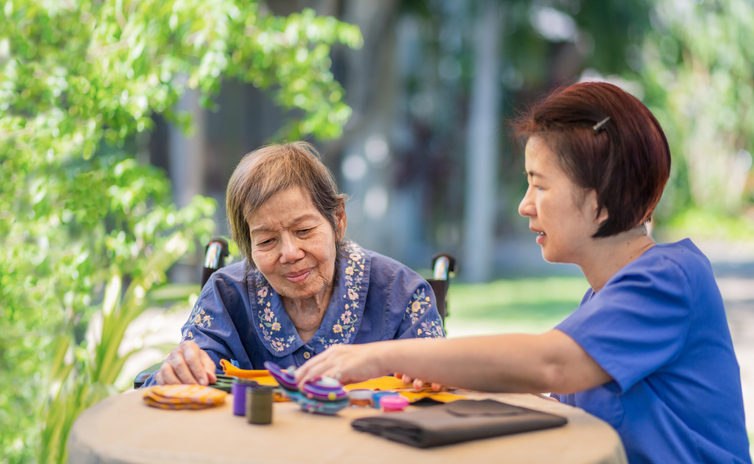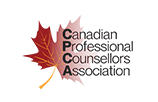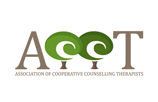
Counselling therapists use a wide range of techniques to engage with their clients, depending on their unique situations. Expressive therapies are one group of techniques that may be effective for certain clients. These types of therapies include activities such as drawing, drumming, creative movement, and play, enabling clients to express thoughts and feelings in unique ways (Malchiodi, 2005).
Also called art therapies or integrative approaches, these methods have been used since ancient times as treatment. Expressive therapies open up doors to avenues of healing not found in traditionally verbal therapies, such as self-expression, active participation, imagination, and mind-body connection (Malchiodi, 2005). Read on to find out how counselling therapists can use these techniques to help their clients.
Where Expressive Therapies Would Be Useful
Expressive therapies are found to have a variety of purposes and potential outcomes. By their nature, expressive therapies can enable a feeling of detachment from problems, and foster feelings of relaxation and rest (Hoffman, 2016). On a deeper level, counselling therapists can utilize expressive therapies to help clients reflect on meaning and purpose, disclose their personal needs and wants, and develop sensitivity. Expressive therapies have the potential to develop imagination and creativity, empathy, and pro-social attitudes (Hoffman, 2016).

There are numerous situations in which expressive therapies have proven to be useful. They are used by professionals in a counselling therapist career in environments such as prisons, addiction treatment centres, nursing homes, and hospices (Hoffman, 2016). Research has shown that forms of expressive therapy have resulted in improvement in the emotional state and perceived symptoms of cancer patients (Regev & Cohen-Yatziv, 2018). Art therapy interventions have resulted in reported improvements in both prison inmates and older individuals experiencing daily challenges (Regev & Cohen-Yatziv, 2018).
A Counselling Therapist Can Use These Methods for Clients with PTSD
One of the populations that expressive therapies have shown to be effective with is persons with post-traumatic stress disorder. A counselling therapist may encounter clients with PTSD who exhibit avoidance tendencies, and may not be able to articulate symptoms or memories in purely verbal ways ( Smyth & Nobel, n.d.). It may be difficult to help guide them to a place of safety and recovery.
Expressive therapies help, as they focus on facilitating a safe environment, and providing a medium for expression while maintaining the feeling of safety. This feeling of safety has the potential to make space for emotional engagement and personal development in a way that strictly verbal therapies are unable to. Studies have demonstrated the preliminary effectiveness of expressive therapies in managing PTSD symptoms, reducing depression, and improving quality of life (Smyth & Nobel, n.d.).
The Benefits of Expressive Therapies for Children
Expressive therapies can also be beneficial when engaging with clients that are children. A counselling therapist can use expressive therapies to promote self-expression, personal independence, exploration of feelings and emotions, and positive perspectives on life (Brown, 2012). Children who engage in expressive forms of therapy may also experience an increase in attention span, hand-eye coordination, awareness, and orientation, all of which are important for developing minds (Brown, 2012).

The promotion of emotional literacy is at the centre of expressive therapies. Emotional literacy is a core life skill that can be developed through a relationship with a counsellor, involving self-knowledge, self-expression, and a robust understanding of one’s emotions. Persons with emotional literacy skills can sense and locate emotions in their body, communicate them, and speculate about the causes of their emotions (Pearson & Wilson, 2008). Expressive therapies support the development of emotional literacy in important ways.
Do you want to enroll in counselling therapist courses?
Contact Rhodes Wellness College for more information!
Works Cited
Malchiodi, C. (2005). Expressive Therapies: History, Theory, and Practice. Guilford Publications. https://www.psychologytoday.com/files/attachments/231/malchiodi3.pdf
Hoffmann, B. (2016). The Role of Expressive Therapies in Therapeutic Interactions. Trakia Journal of Sciences. 3, 197-202. http://tru.uni-sz.bg/tsj/Vol.14,%20N%203,%202016/B.Hofman%20(1).pdf
Smyth, J. and Nobel, J. (N.D.) Creative, Artistic, and Expressive Therapies for PTSD. Arts & Healing. http://www.artandhealing.org/wp-content/uploads/2015/07/PTSD-White_Paper_Smyth_Nobel1.pdf
Brown, A. (2012). Psychological Benefits of Art Therapy. Canadian Counselling and Psychotherapy Association. https://www.ccpa-accp.ca/psychological-benefits-of-art-therapy/
Regev, D. and Cohen-Yatziv, L. (2018). Effectiveness of Art Therapy With Adult Clients in 2018 – What Progress Has Been Made? Frontiers in Psychology. https://www.frontiersin.org/articles/10.3389/fpsyg.2018.01531/full
Pearson, M. and Wilson, H. (2008). Using Expressive Counselling Tools to Enhance Emotional Literacy, Emotional Wellbeing, and Resilience: Improving Therapeutic Outcomes with Expressive Therapies. Counselling, Psychotherapy, and Health. 4(1), 1-19. https://www.researchgate.net/profile/Mark_Pearson6/publication/242353214_Using_expressive_
counselling_tools_to_enhance_emotional_literacy_emotional_wellbeing_and_resilience_Impro
ving_therapeutic_outcomes_with_Expressive_Therapies/links/54a63c830cf267bdb9082def.pdf









